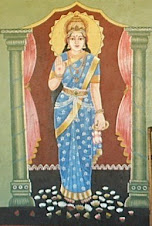





.JPG)

.jpg)

.JPG)
Organic gardening at Pattiniwatte, Pattinigodella, Pore, Athurugiriya, Sri Lanka






.JPG)

.jpg)

.JPG)
 think the developers had used some kind of herbicide to clear off the undergrowth. They had already cut down all the trees. They had also bulldozed downhill - so the best soil was on the plot for common use.
think the developers had used some kind of herbicide to clear off the undergrowth. They had already cut down all the trees. They had also bulldozed downhill - so the best soil was on the plot for common use. carving great big runnels and taking even more soil downhill. The first thing to do was to limit erosion damage by digging two lateral drains across the land, along the contours.
carving great big runnels and taking even more soil downhill. The first thing to do was to limit erosion damage by digging two lateral drains across the land, along the contours. The soil between the large plants which I put in was mostly bare, except for a few clumps of wild grass and citronella.
The soil between the large plants which I put in was mostly bare, except for a few clumps of wild grass and citronella. I started putting the clippings into large plastic fertilizer bags and carrying it to Pattinigodella in the back of my car.
I started putting the clippings into large plastic fertilizer bags and carrying it to Pattinigodella in the back of my car.The ancients of Sri Lanka used a complex set of measures of length and distance, ranging from the noola (⅛ of an inch or 3.17 mm) and riyana (cubit - 18 inches or 450 mm) to the gauwa (Sinhalese league - 5600 yards or 3¼ miles or 5.12 kilometres) and yoduna (Sanskrit yojana - 4 gauwas).
Agricultural measurements were rather less precise. The peasants measured distance across the fields in hoos; a hoo I being the distance across which a hoot could be heard. Another measure of distance was how far it took for a man walking at a normal pace to raise his sarong high enough for the wind to cool his testicles, generally called a mile (hæthapuma).
Agricultural land was traditionally measured in Amunams; an amunam of land being the area which could be sown with an amunam (5-6 bushels) of grain, or about 0.8-1 hectares (2-2 ½ acres). This unit was in use well into the middle of the 20th century, particular in litigation.
However, when the all-encompassing British Empire took over, it imposed its own imperial system of weights and measures. Imperial feet and miles took over from riyanas and gauwas. The relatively simple Sinhalese system was replaced by a complicated structure of multiplications by 3, 4, 5½, 12, 16 and 20.
Henceforth land area was measured in acres, roods, and perches. An acre was the amount of land that a team of mediaeval English oxen could plough in a day. An acre has 4 roods and a rood, 40 perches.
A perch is defined as a square pole (or rod or goad or perch), originally the length of the stick with which the ploughman goaded his oxen. In modern use a pole is 5½ yards (16½ feet or 5.03 m), so a square perch is 30¼ square yards (272.25 square feet or 82.98 m2).
Nowadays all land measurements are supposed to be in the metric system, with square metres and hectares. However, property is still sold by the perch and by the acre, although (sadly) no longer by the amunam.

My sister was up to scratch (as should be anyone who wishes to make a career in the dark art of architecture and town planning) with Vaastu and Feng Shui. So I read up on them both.

The first order of business was to build a fence around the land, to prevent cattle and water buffalo from entering and destroying the plantation. There was a herd of water buffalo and a few head of neat cattle around.
For this I used plastic-covered chain-link fencing, supported by round concrete posts at 2.5 metre (8 ft) intervals. I chose green because it would blend most with the background and (I hoped) give an impression of not being there.

Below the land was an area reserved by the developer for public space. It was likely to become a playground, so the chain-link fencing would allow me to see into the playground and give an impression of more space. Besides, it is not as forbidding as barbed wire...
Unfortunately, the developer built an ugly big water tank smack in the centre of the public space.

So then I had to think of planting trees in front of it to obscure this ghastly structure.

The horrid box on stilts can be seen to the right of centre in the photograph.
.jpg)
